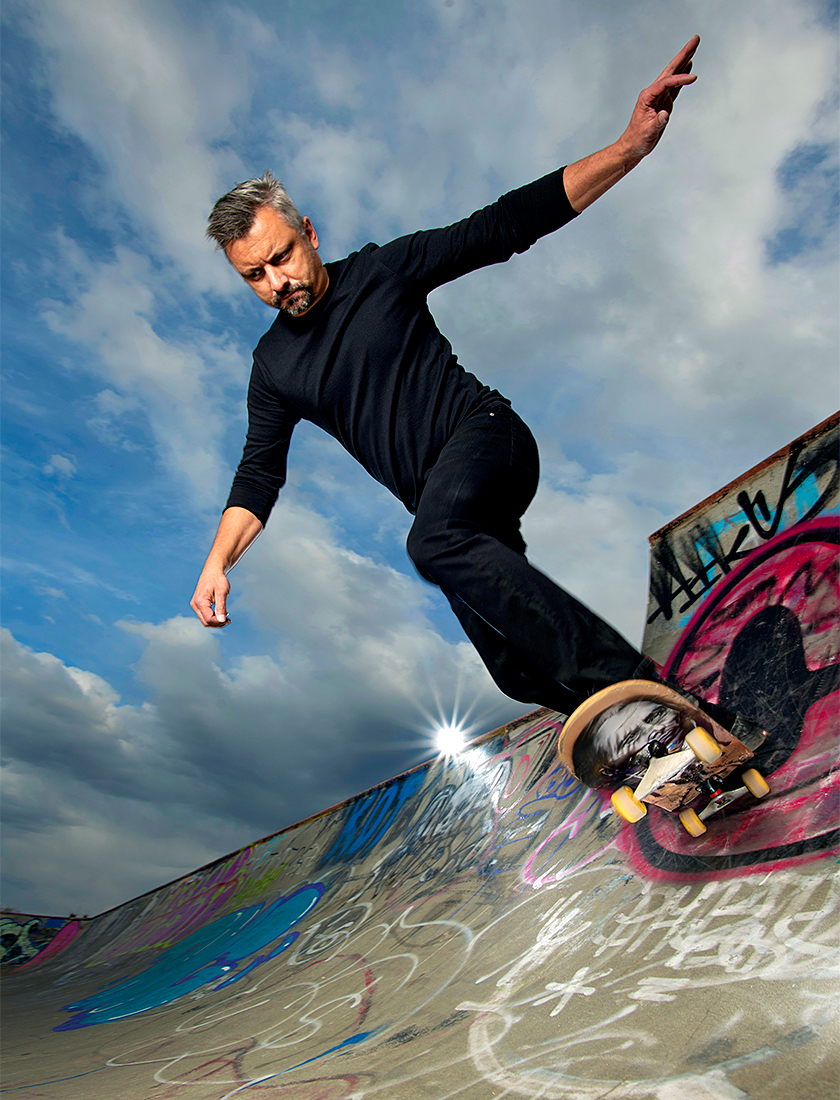Kristian Basaraba, ’01 BEd, has been skateboarding for more than 30 years. But the high school teacher never thought that he’d be leaning so heavily on the sport in the classroom. In 2019, he started the Sk8trepreneur program at Salisbury Composite High School in Sherwood Park, Alta., challenging students to create their own skateboarding brand and to design assets like grip tape and a skateboard. The curriculum twist — that the skateboard brands were to draw on learnings about Indigenous history, colonialism and reconciliation — won him the 2020 Governor General’s History Award for Excellence in Teaching. But Basaraba says he couldn’t have done it on his own. Here’s what he learned about leaning on others, creating community and fostering relationships.
1: Plant a seed in someone's mind — it'll grow
Basaraba developed Sk8trepreneur after visiting Oasis Skateboard Factory in Toronto, where students create their own skateboard brand and business for high school credit. He was further inspired by the work being done at Colonialism Skateboards, a company that encourages people to learn about the history and enduring legacy of colonization. Basaraba brought these two concepts together and encouraged his students to run with it from there. “If students are provided an opportunity to have a voice,” he says, “and you encourage them to take it, then they’re going to take it.”
2: Lean on the experts
Being non-Indigenous, it was important to Basaraba to involve Indigenous people in the project. “I want the experts to teach them, not me, because I’m not the expert,” he says. He worked closely with Michel Blades, ’95 BA, ’99 BPE, ’99 BEd, a specialist in Indigenous education. He also brought in Joe Buffalo, a professional skateboarder, and John Cardinal, a Cree artist who goes by JCat. Cardinal was a particularly important addition, since Basaraba and many students had little art experience. Without his collaborators, Basaraba says, the project couldn’t have happened.
3: Experience is a compelling teacher
Buffalo, a residential school survivor from Samson Cree Nation, was the perfect guest to have in class. “Their phones were down, you could hear a pin drop as he was telling his story.” One student, Basaraba says, was moved to tears. Speaking from experience, Buffalo showed the students first-hand the lasting impacts residential schools have on Indigenous Peoples and the need for reconciliation.
4: Start a lasting conversation
The relationships students formed in class, including those with local businesses, skateboarders and each other, were instrumental in their learning. “The students were engaged, they had a voice,” says Basaraba. And the art they created sparked discussions around what they had learned. “It’s still creating a discussion,” he says, “because here I am, still talking about it a year later.”
5: Find strength in support
For several Indigenous students in the class, it was empowering to be able to process new and difficult information using creative channels. One of the students adorned her board with a traditional headdress inspired by her grandmother’s beaded earrings. “At the beginning of class, she was a bit hesitant,” Basaraba says. But after bringing the earrings into class, something changed. “She started talking more about her identity. She brought in her Métis card,” he says. “You could just see she was really proud.”

We at New Trail welcome your comments. Robust debate and criticism are encouraged, provided it is respectful. We reserve the right to reject comments, images or links that attack ethnicity, nationality, religion, gender or sexual orientation; that include offensive language, threats, spam; are fraudulent or defamatory; infringe on copyright or trademarks; and that just generally aren’t very nice. Discussion is monitored and violation of these guidelines will result in comments being disabled.